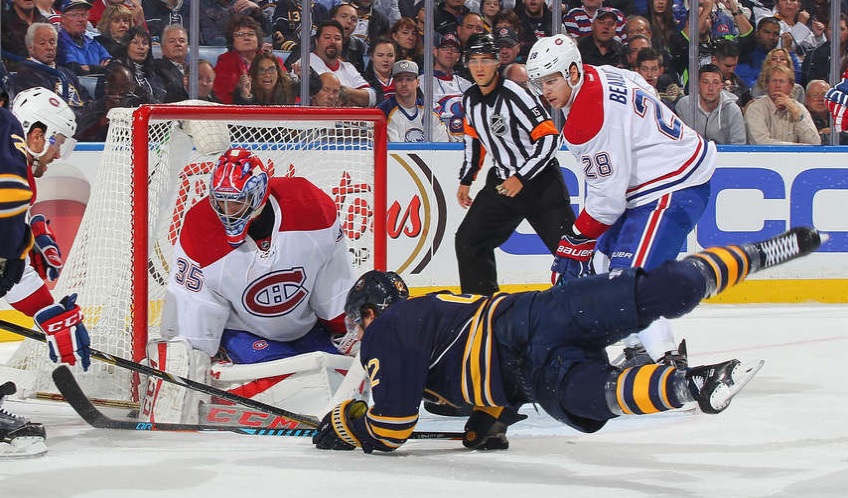Marc Bergevin’s offseason moves were the most comprehensive of his tenure to date. The P.K. Subban – Shea Weber deal along with the Lars Eller and Andrew Shaw moves will all have material impacts on team chemistry, toughness, character and the alignment of the team’s system with the skill sets of key players, hopefully for the better. Moreover, Alexander Radulov may well be that much-needed top-six winger with high end skill for a team that has lacked offensive firepower for many years. Yet, one transaction has been overshadowed that may be one of Bergevin’s wisest decisions this summer: the signing of goaltender Al Montoya to a cap-friendly contract.
Montoya was a first-round pick in 2004, 6th overall by the New York Rangers. While he has not developed into the number one goaltender the Rangers had hoped for, Montoya is a solid NHL backup whose recent numbers demonstrate his value. Montoya broke into the league with the Islanders in 2010-11 and had a save percentage of .921 in his first season, appearing in 21 games. He also has had years where his save percentage dipped below .900. However, in 2015-16 with the Florida Panthers, he appeared in 25 games, had a save percentage of .919 and provided the Panthers with quality back-up goaltending to complement the eminent and aging Roberto Luongo. Early in Luongo’s career, he was a workhorse playing anywhere from 65 to 75 games per year. More recently, when he was not fighting for the number one spot with Cory Schneider in Vancouver, Luongo settled in at around 60 games per year. The 2015-16 resurgence of the Florida Panthers was due to many factors and a superior goaltending tandem over 82 games was certainly one of them.
Last year’s season-ending injury to Carey Price effectively ended any reasonable aspirations the Habs may have had for a deep post-season run. We can weep and gnash teeth on the subject of whether the team’s total collapse was inevitable but the Canadiens were clearly out-manned up front and outplayed in goal with Mike Condon as their top healthy option. Was Condon’s coaching, preparation, work ethic and/ or diligence to blame? No. Was he good enough at that phase of his career to play goal in that system with the team’s roster? Of course not.
With the Canadiens’ personnel and Michel Therrien’s system, elite goaltending is imperative. The competitiveness of each NHL game, the pressure to win in Montreal and the inability of the Habs to dominate even the league’s weaker teams all converge to pressure Therrien to start Price as much as possible. This pressure was exacerbated when Option B was Dustin Tokarski and Mike Condon, two fine athletes that to date have been at best only adequate NHL backups. The Canadiens really have not had a quality second goaltender since Peter Budaj. The result: Price plays 65-70 games and, come playoff time, Price is either exhausted, hurt or both.
Of course, Montoya did not replace Luongo last year and he will certainly not replace Carey Price. Any close comparisons between Montoya and St. Carey begin with the condition of their knees and end with their draft order (Price was drafted 5th overall in 2005). However, if Montoya can play 20-25 games and the Canadiens make the playoffs, a rested and fresh Carey Price would rightly elicit fear in even the most capable of No. 1 playoffs seeds.
As Marc Bergevin has himself commented, time will tell whether his off-season moves bear fruit. Much focus will remain on Shea Weber, Alexander Radulov, Andrew Shaw and how the players that went the other way perform. Nonetheless, the acquisition of Al Montoya might yield great dividends this Spring, even if Montoya does not appear in a single playoff game.
